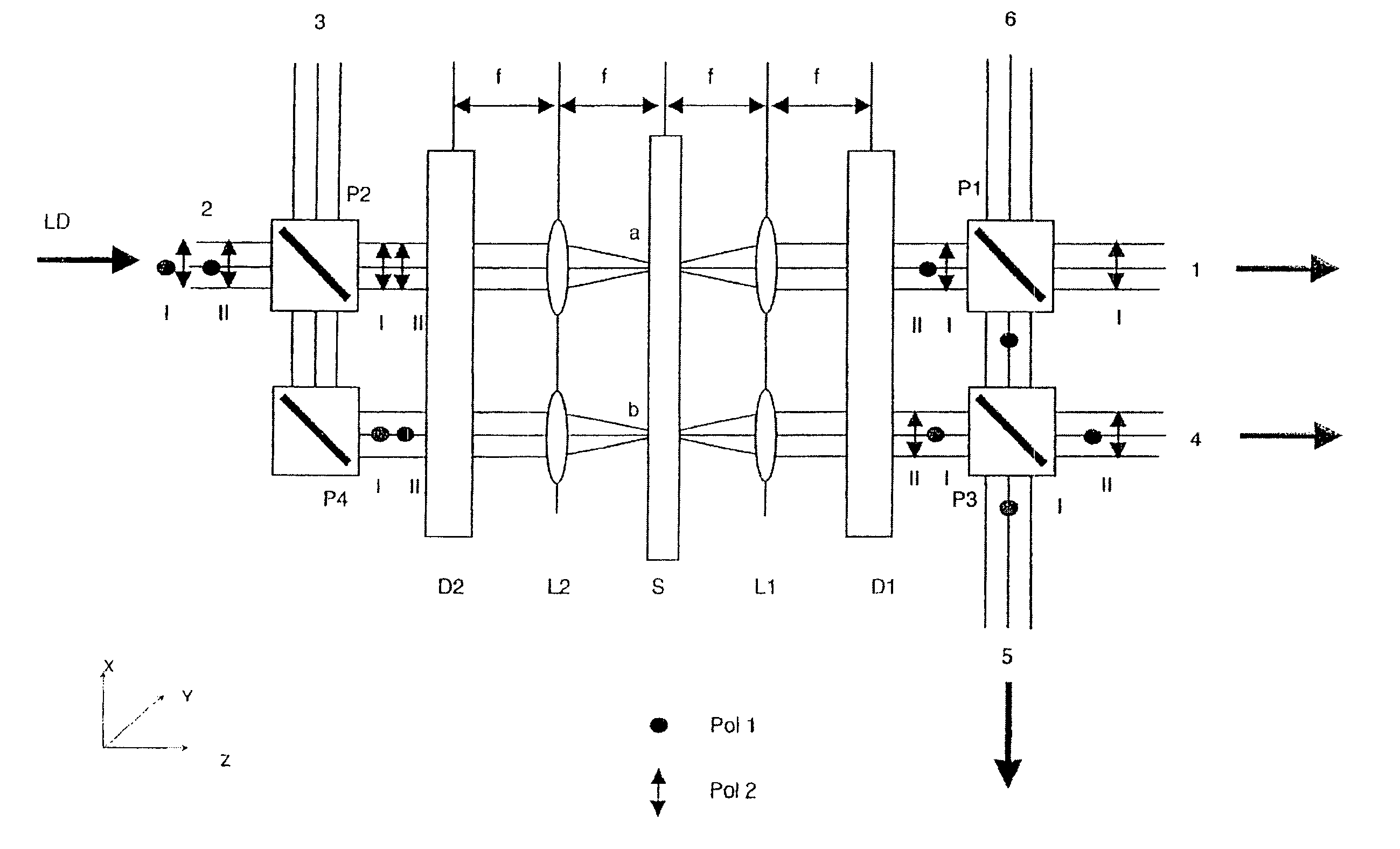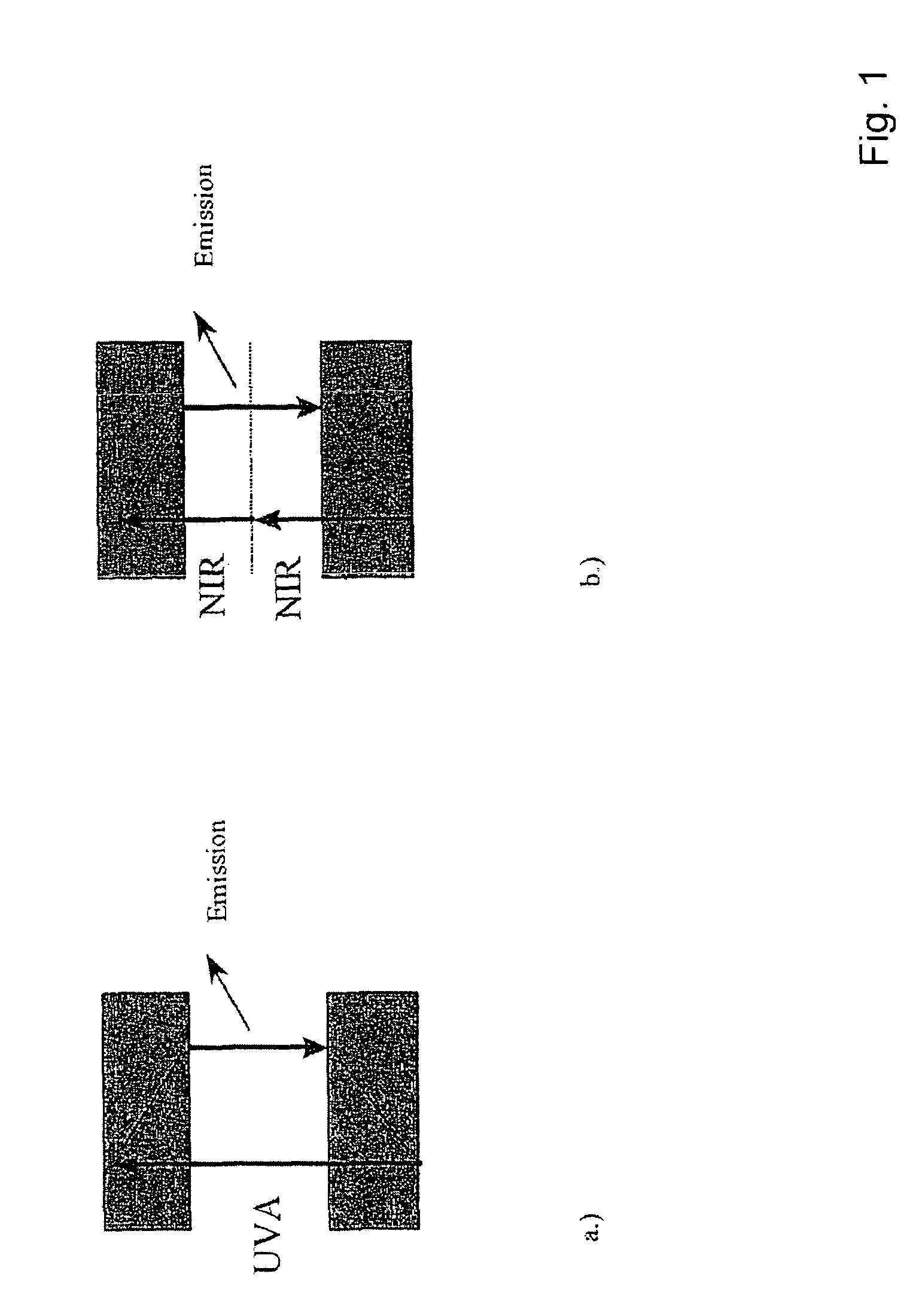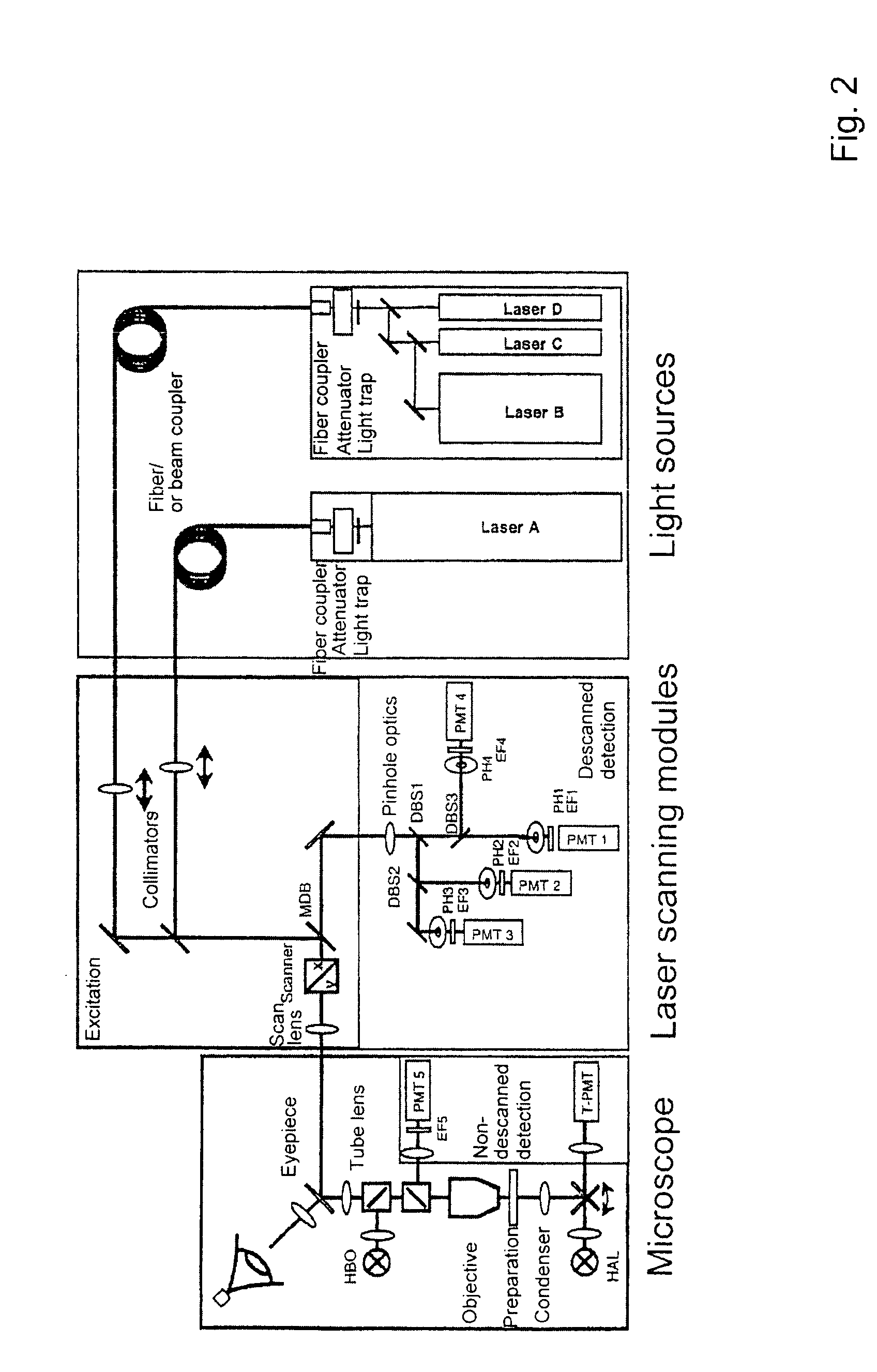Method and arrangement for changing the spectral composition and/or intensity of illumination light and/or specimen light in an adjustable manner
a specimen light and spectral composition technology, applied in the field of microscopy, can solve the problems of not being able to adjust in a flexible manner, limiting the efficiency of typically 70% to 90%, and separating excitation light from specimen light in a wavelength-dependent manner, so as to reduce the sensitivity of detection, increase the noise of the detector, and increase the effect of amplification
- Summary
- Abstract
- Description
- Claims
- Application Information
AI Technical Summary
Benefits of technology
Problems solved by technology
Method used
Image
Examples
Embodiment Construction
[0051]Various arrangements by which the light radiation (hereinafter, detection light) excited and / or backscattered in the specimen can be separated from the excitation light in a particularly efficient manner will be described more fully in the following. The arrangements are accordingly suitable in particular for fast multitracking with a flexible separation of the excitation radiation from the detection light that is adapted with respect to spectrum. In the following context, light that is emitted by the specimen is light which is preferably radiated from the specimen in a large solid angle. This light is not polarized (unpolarized). This refers in particular to fluorescent light and luminescent light excited in the specimen and backscattered light.
1. Principle of operation of the arrangement for variable separation of excitation light from detection light
[0052]The construction of the arrangement for separating the excitation light from the detection light is shown schematically ...
PUM
| Property | Measurement | Unit |
|---|---|---|
| edge length | aaaaa | aaaaa |
| wavelength | aaaaa | aaaaa |
| angles | aaaaa | aaaaa |
Abstract
Description
Claims
Application Information
 Login to View More
Login to View More - R&D
- Intellectual Property
- Life Sciences
- Materials
- Tech Scout
- Unparalleled Data Quality
- Higher Quality Content
- 60% Fewer Hallucinations
Browse by: Latest US Patents, China's latest patents, Technical Efficacy Thesaurus, Application Domain, Technology Topic, Popular Technical Reports.
© 2025 PatSnap. All rights reserved.Legal|Privacy policy|Modern Slavery Act Transparency Statement|Sitemap|About US| Contact US: help@patsnap.com



